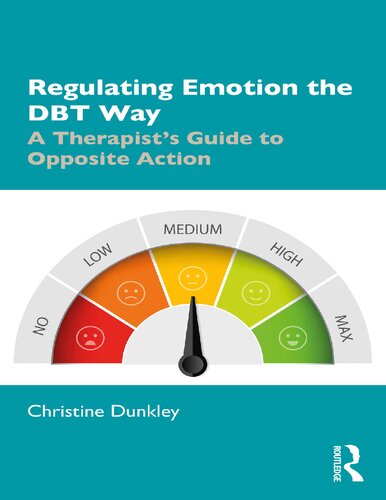

Most ebook files are in PDF format, so you can easily read them using various software such as Foxit Reader or directly on the Google Chrome browser.
Some ebook files are released by publishers in other formats such as .awz, .mobi, .epub, .fb2, etc. You may need to install specific software to read these formats on mobile/PC, such as Calibre.
Please read the tutorial at this link. https://ebooknice.com/page/post?id=faq
We offer FREE conversion to the popular formats you request; however, this may take some time. Therefore, right after payment, please email us, and we will try to provide the service as quickly as possible.
For some exceptional file formats or broken links (if any), please refrain from opening any disputes. Instead, email us first, and we will try to assist within a maximum of 6 hours.
EbookNice Team

Status:
Available0.0
0 reviewsRegulating Emotion the DBT Way is a practical guide to the DBT skill of ‘Opposite Action’, which helps clients develop the skill of up- or down-regulating their emotions when necessary. It is the skill that fosters emotional literacy in clients who have learned to fear or avoid painful feelings.
Part A of the text introduces emotion theory, describes how to validate emotions, and explains how Linehan’s ‘Opposite Action’ skill is used to regulate problematic responses. There are examples and analogies that can be shared with clients, and clinical examples to demonstrate the key points. There is a description of how DBT therapists contextualise emotion using chain analysis. Part B dedicates a chapter to each of the basic emotions and describes its signature features. A session scenario is included allowing the reader to see how the therapist coaches the skill of opposite action, elicits behavioural rehearsal, and gives corrective feedback. There are some tips on handling common issues specific to that emotion, based on the author’s extensive experience.
This book will be of interest to any therapist who wants to learn more about a behavioural approach to emotion such as psychologists, nurses, social workers, psychiatrists, counsellors, cognitive therapists, prison staff, and occupational therapists. It is an accessible explanation of emotion regulation for people who have already undertaken DBT training.